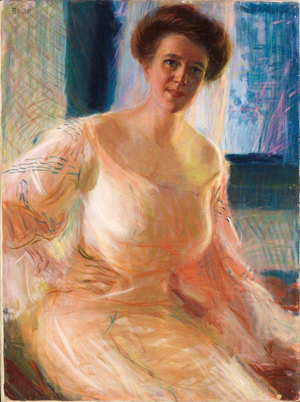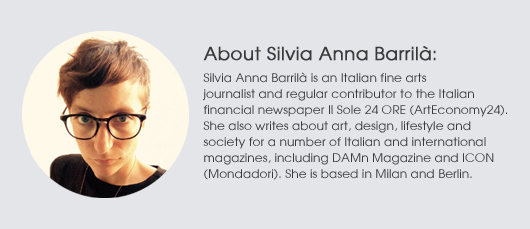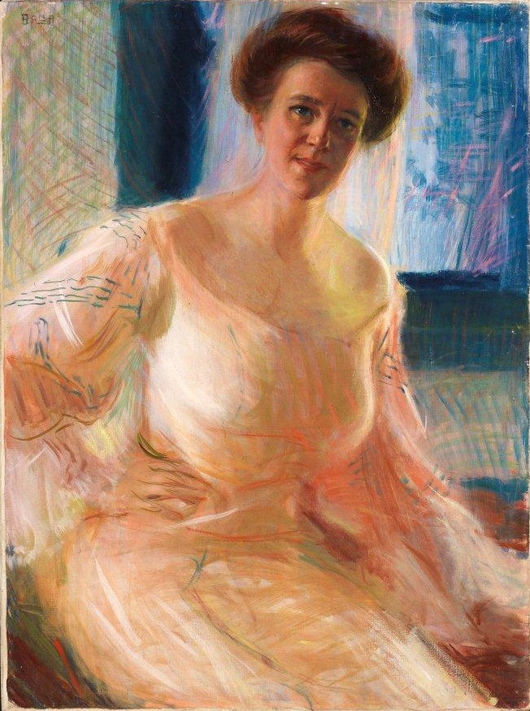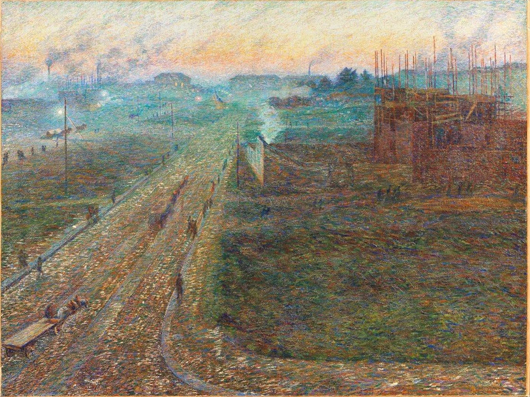
CORTINA D’AMPEZZO, Italy – Every August, the gallery and auction house of Siena Farsettiarte organizes at its headquarters in Cortina d’Ampezzo, a resort in the Dolomites, a retrospective exhibition that traces the history of art of the 20th century. This year, from Aug. 8–31, the exhibition entitled “Divisionism and Futurism. Italian art delivered to modernity” evokes the transition from Divisionism to Futurism in Italian art, including about 30 works by famous authors such as Giacomo Balla, Umberto Boccioni, Carlo Carra, Fortunato Depero, Ottone Rosai, Gino Severini, Mario Sironi, Soffici and Lorenzo Viani.
The idea came from the founder of the auction house, Frediano Farsetti. “The exhibition has a didactic aim, more than a commercial one,” Frediano Farsetti’s daughter and collaborator Sonia Farsetti said. “Many of the works are not for sale, but are on loan. For those delivered for sale, prices start at €200,000.”
The exhibition focuses on the radical stylistic and aesthetical transformations that took place in the decade from 1910 to 1920. A major player in this passage was Giacomo Balla, who was born in 1871 and disappeared in 1958. Balla acted as an intermediary between the generation of Divisionists Giovanni Segantini and Gaetano Previati, born in the 1850s, and the generation of Futurists Umberto Boccioni, Carlo Carrà and Gino Severini, born in the 1880s.
Divisionism had emerged in the last decade of the century, in particular with the participation of Giovanni Segantini, Gaetano Previati and Angelo Morbelli at the Brera Triennale in Milan in 1891. The movement was inspired by the technique of French pointillism of Seurat and Signac to reproduce the real and the effects of light. Unlike the French painters, Divisionism did not give so much importance to the technical rigor, but rather to the symbolism and the subject of the painting, often of a social nature. Balla also faced social issues (for example in the work La giornata dell’operaio from 1904 and in La pazza from 1905, today at the National Gallery of Modern Art in Rome), before radically changing style and moving to a painting of Futuristic type (such as Lampada ad arco, from 1909, today in the MoMA collection), and then signing Marinetti’s Manifesto of Futurism in 1910, also signed by Umberto Boccioni, Carlo Carrà, Luigi Russolo and Gino Severini.
The exhibition at Farsettiarte includes four works by Boccioni: Campagna romana from circa 1902, Germogli primaverili (Paesaggio di Villa Borghese), from 1906, Ritratto di signora from 1907, and Nel prato, from 1908, two particularly important works. All these paintings bear witness to the arrival of the Futurist revolution, which was best expressed in Boccioni. There are three paintings by Boccioni on display: Pagliaio al sole, from 1908, Crepuscolo, from 1909, and Nudo disteso.
The spatial and formal research of the Futurism also appears in other works on display, such as Paesaggio Toscano by Severini (1912), Ritmi e linee by Carlo Carra (1912), La ballerina del San Martino, and L’Arlecchino by Sironi, both from 1915.
The paintings by Ardengo Soffici and Ottone Rosai, on the contrary, testify the current of the Florentine Futurism, which was sometimes in contrast with the Milanese movement, like the episode of the brawl in 1911 between Boccioni, Marinetti and Carrà on one side and Soffici, Prezzolini and Slataper, and Spaini on the other shows.
By Ottone Rosai, who was younger than the other Futurists, there are three paintings on display from the end of the second decade of the 20th century: Follie estive (1918-1919), Bottiglia e ciotola (1919) and Serenata (1919-20).
The exhibition at Farsettiarte is also interesting from the point of view of the market, given the scarcity of works of these two movements circulating. “Both for Divisionism and Futurism there is the problem of availability of works on the market, because there are few works for sale,” said Sonia Farsetti. “They are mostly in public or private collections. But when there are good works on the market, collectors respond very well and high prices are scored. Especially for names such as Boccioni and Severini.”
Among the two movements, Futurism has a stronger market because it was more defined, while the Divisionism has been wider and straddling over two centuries. Beside the problem of availability of works, there is also that the question of the limited presence of the movement on the international level, for which the works by the painters of Divisionism mark much lower prices outside Italy than those by, for example, French Pointillists. The circulation of both Divisionism and Futurism is limited by the export issue, which is made difficult by the Italian law, precluding the knowledge and circulation of these movements on the international stage.

ADDITIONAL IMAGES OF NOTE




